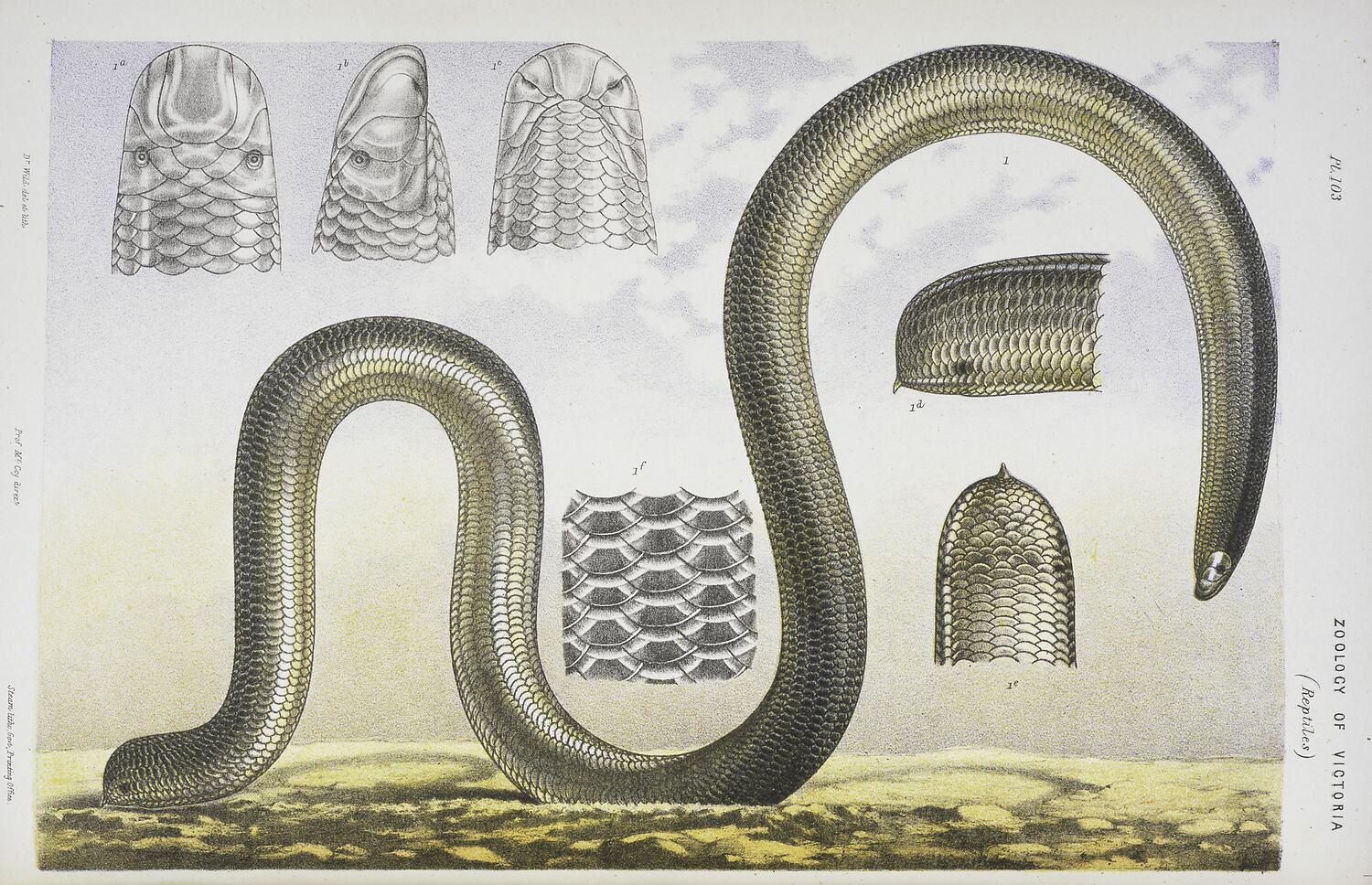Blind Snake, Ramphotyphlops nigrescens
Plate 103. The Blackish Australian Worm-Snake, Typhlops nigrescens (now known as the Blind Snake, Ramphotyphlops nigrescens) found in Murchison
The "Slow-Worms" or "Blind-Worms" of English writers, and their numerous allies in various foreign countries, are very difficult to classify, from their having several characters of Lizards combined with most of those of Snakes. The absence of external limbs, although striking the popular eye, is not a distinctive character, for in some undoubted Lizards these are wanting.
By a sort of practical joke, not uncommon in nature, the posterior, or tail end, in this species is made to look almost exactly like a head, by a pair of round black spots, so nearly of the size, shape and color of the real eyes of the other end, and so similarly placed over the ends of the transverse, lunate, mouth-like slit on the ventral surface of that end, as to be readily taken for the eyes by an unpractised observer, taking away even the crucial test by which the boys in Leech's caricature terminated their dispute as to which was the head of the Skye terrier, by one at last "seeing the eyes" at the most unlikely end.
The "Blackish Worm-Snake" is not uncommon in the northern warmer parts of the colony in localities having a loose, friable, or sandy soil, in which burrows to a considerable depth with extraordinary ease and quickness. The specimen figured is from Murchison, presented by Mr. H.J.E. Brisbane; but two still larger ones sent to me alive by Mr. J.P. Watt, from Taripta, I have kept alive for quite some time in large glass jars half filled with sandy soil at bottom, into which, when brought to the surface, they burrow so rapidly that the whole body is out of sight in an instant-the head being first raised, then arched and forced down with such strength that the glossy smooth body is quickly buried to the greatest depth. These specimens were dug out of an ant-hill in which they dwelt in the midst of the abundant insect food suited to them. It is almost impossible to hold them, they struggle with such strength, and are so smooth and slippery. The tongue is very long, narrow, flat, largely forked at the end, and of a dull red color, being darted out frequently to a length of an inch or so, as in ordinary Snakes. These Worm-Snakes are perfectly harmless, although, like the Slow-Worms and their allies in other countries, they are popularly supposed to be very poisonous. They do not attempt to bite when handled; and as the mouth is so very small...and there are no poison glands, there could be no harm to man if they did. It has not been figured of the colors of life before.
